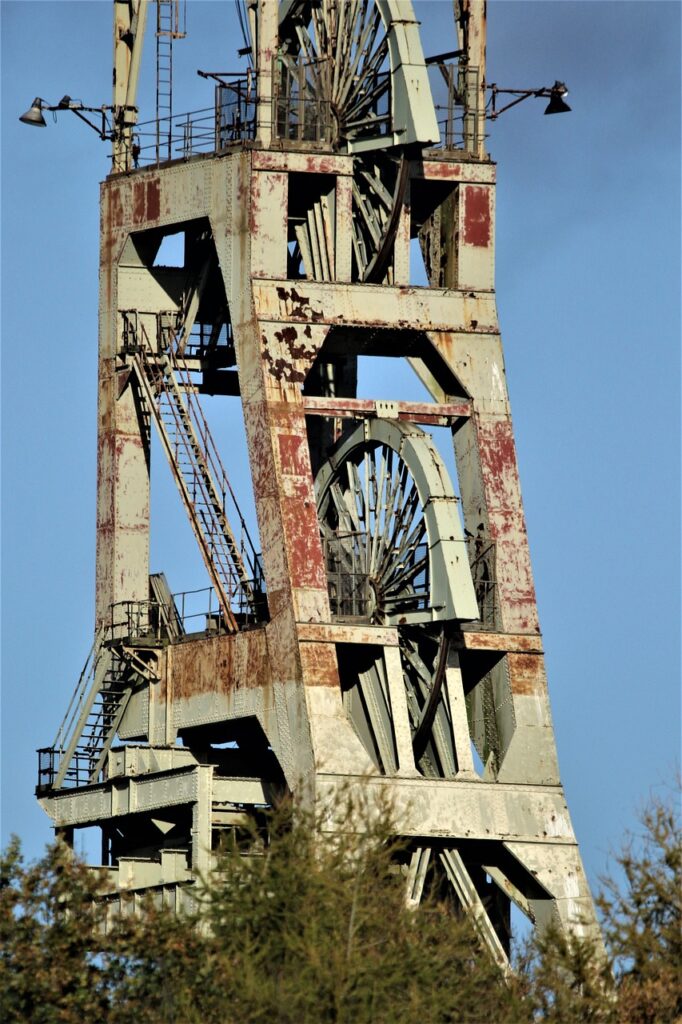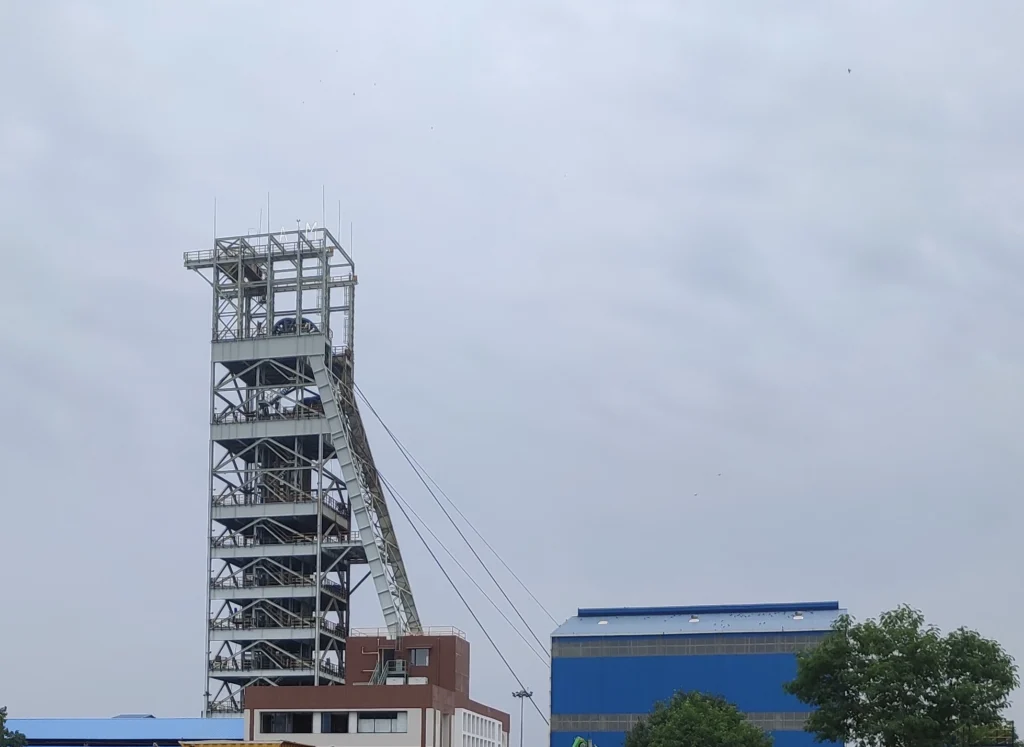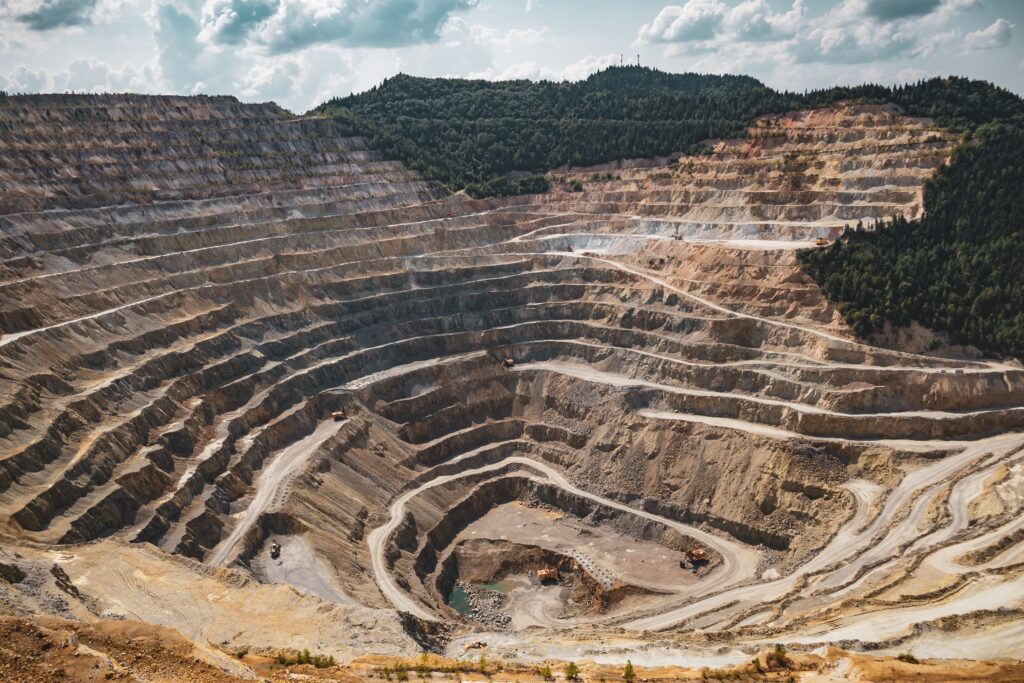Shaft Sinking
Shaft sinking in mining is the process of developing a vertical or near vertical big hole (Shaft) for any purpose, where there is no initial access to that part. It is very dangerous, hard and time taking process.
Mining, the age-old practice of extracting valuable resources from the Earth’s crust, has evolved over centuries into a sophisticated and technologically advanced industry. One of the most crucial processes in underground mining is shaft sinking. This intricate and challenging endeavor involves creating vertical tunnels that provide access to deeper layers of the Earth, facilitating the extraction of minerals, ores, and other precious substances. In this blog post, we’ll delve into the fascinating world of shaft sinking, exploring its methods, challenges, and significance in modern mining operations.
Table of Contents
Shaft can be used for many purposes. The main uses include:
- For mining purpose
- For the underground temporary storage
- For the foundation of bridges
- For ventilation in any part of earth
But here in this blog, we are going to discuss only about its mining purpose.

Shaft Sinking Methods/Procedure

In conventional method where we do sinking by conventional techniques, but places where special conditions are present, for example presence of water in ground, we need these special shaft sinking methods.
Shaft sinking is a very costly operation which requires a big amount of initial capital for it. And it is also a very slow and risky operation which requires proper planning and skilled manpower.
Shafts can be developed in many shapes but in mining, for safety & stability concern, mainly circular shafts are preferred.
The Basics of Shaft Sinking in mining
At its core, shaft sinking is the process of excavating a vertical or near-vertical tunnel, known as a shaft, from the surface to reach valuable deposits located at depth. This tunnel serves as a conduit for miners, equipment, and materials, and also facilitates ventilation, communication, and transportation within the mine. The process is multifaceted and involves several critical steps:
- Site Selection and Planning: Before a shaft can be sunk, thorough geological surveys and engineering assessments are conducted to determine the optimal location and angle of the shaft. Factors such as the deposit’s depth, the surrounding rock conditions, water table levels, and potential hazards are taken into account.
- Pre-sinking Preparations: Once the site is chosen, preliminary work begins, including clearing the area, constructing surface infrastructure (such as headframes and hoisting systems), and securing the site for safety.
- Drilling and Blasting: The actual shaft sinking starts with drilling boreholes into the ground along the planned shaft route. Explosives are strategically placed within these holes to create controlled blasts, fracturing the rock and allowing for excavation.
- Rock Removal: After each blast, broken rock, or “muck,” is removed from the shaft using various methods, such as buckets, conveyors, or skips. Simultaneously, ground support systems, such as bolts and mesh, are installed to stabilize the shaft walls.
- Lining the Shaft: As the shaft deepens, it’s crucial to line the walls with concrete or other materials to prevent collapses and ensure stability. This process is known as shaft lining.
- Installation of Services: Once the shaft is deep enough, essential services like ventilation, electricity, and communication systems are installed to support mining operations underground.
Significance of Shaft Sinking
The significance of shaft sinking in mining engineering cannot be overstated. It serves as the backbone of underground mining operations, providing the vital access required to extract valuable resources from the Earth’s depths. Shaft sinking allows miners to reach ore bodies that would otherwise remain inaccessible, unlocking new reserves and extending the life of a mine. Furthermore, it enables efficient transportation of miners, equipment, and materials, while also facilitating ventilation and safety measures that are integral to modern mining practices.
Factors:
There are so many factors which governs the sinking process. It includes depth of shaft, material to be handled, manpower, machinery used, degree of mechanization, ventilation requirement, initial investment, operating cost & the price of mineral.
Conclusion
Shaft sinking in mining is a remarkable feat of engineering and ingenuity that has played a pivotal role in shaping the mining industry. From the early days of manual labor to today’s advanced machinery and technologies, the art of sinking shafts continues to evolve, enabling miners to venture deeper into the Earth and extract precious resources that power our modern world. As mining operations become increasingly sophisticated, so too does the science behind shaft sinking, ensuring the sustainable and responsible extraction of minerals for generations to come.



Pingback: What is Mining Engineering? It's courses and career of a mining engineer in 2023
Good
Thanku sir
Your content is very helpful for increasing our knowledge.
Because there is very less resources about mining field.
Pingback: Vande Bharat Express: India's life-changing Marvel 2023